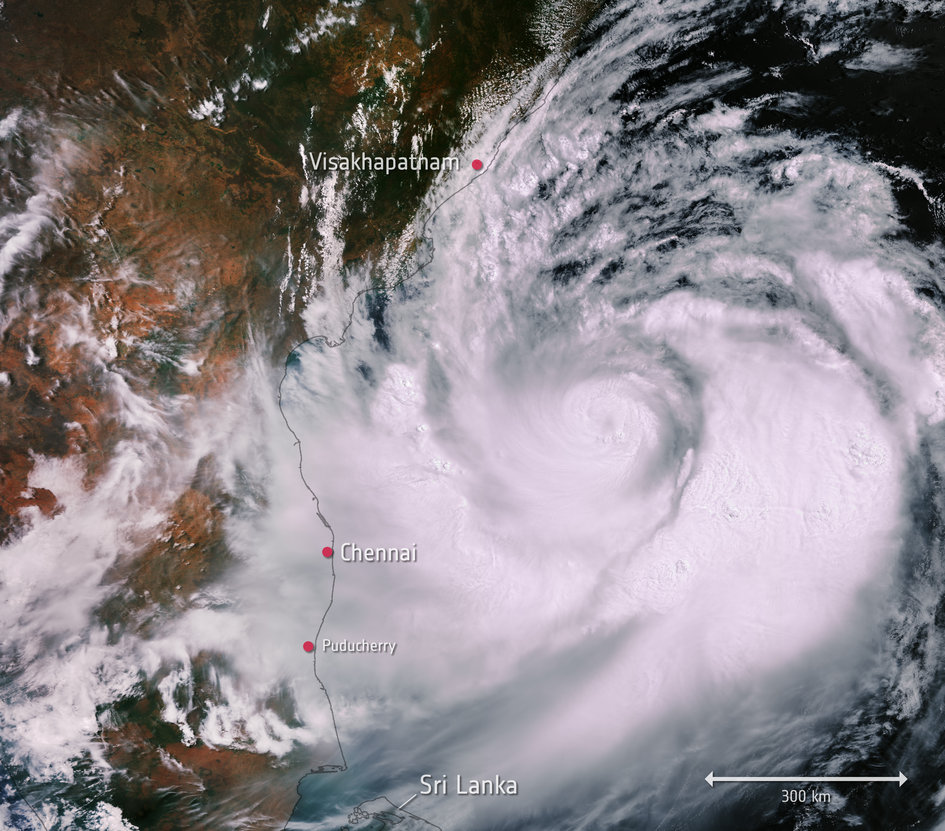Monster Cyclone Fani Over India Looked Fearsome from Space

As Cyclone Fani strengthened and made landfall over eastern India on May 3, a network of weather satellites kept an eye on the massive storm.
The cyclone peaked with wind speeds of up to 127 mph (204 kilometers/hour), the equivalent of a Category 4 hurricane. (Hurricanes and cyclones are the same basic weather phenomenon, just located in different regions of the world).
Extremely Severe Cyclonic Storm #Fani, now a dangerous Cat. 4 storm on the Saffir-Simpson Hurricane Wind Scale, remains just off the coast of India in this imagery from #Himawari8. More imagery: https://t.co/Zz3zZvHSii pic.twitter.com/yh8ROw6xPGMay 2, 2019
Over the course of Fani's formation and dispersal, the storm was watched by weather satellites including NOAA-20, Himawari8 and Suomi NPP, all run by the National Oceanic and Atmospheric Administration, as well as NASA's Terra satellite.
Before the storm's arrival, the Indian government evacuated more than 1 million people in a procedure already being credited for saving countless lives in a poor, low-lying region of the country. Several people died, according to current tallies, but that's many fewer than might have been expected — the last major storm to hit the region, 20 years ago, killed more than 10,000 people.
Meteorologists first identified the patch of air that would become Cyclone Fani about a week in advance, and the storm closely matched their predictions of where it would make landfall, giving the government time to roll out a detailed notification and evacuation plan.
After making landfall, Fani headed northeast and started to weaken.
- Watch Hurricane Florence Make Landfall in This Incredible Space Station Video
- Why Do Hurricanes Have Eyes? Scientists Still Don't Really Know
- Hurricane Lane in Photos: Massive Storm as Seen from Space
Email Meghan Bartels at mbartels@space.com or follow her @meghanbartels. Follow us on Twitter @Spacedotcom and on Facebook.
Breaking space news, the latest updates on rocket launches, skywatching events and more!

Meghan is a senior writer at Space.com and has more than five years' experience as a science journalist based in New York City. She joined Space.com in July 2018, with previous writing published in outlets including Newsweek and Audubon. Meghan earned an MA in science journalism from New York University and a BA in classics from Georgetown University, and in her free time she enjoys reading and visiting museums. Follow her on Twitter at @meghanbartels.
